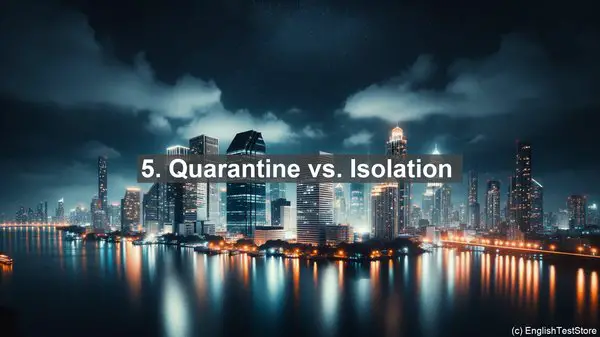Introduction: The Importance of Word Choice in Public Health
Welcome to today’s lesson on the top 10 commonly confused words in public health. As future professionals in this field, it’s essential to communicate effectively. The right word choice can make all the difference in conveying accurate information and avoiding misunderstandings.
1. Epidemic vs. Pandemic
These terms often make headlines, but do you know the difference? An epidemic refers to a sudden increase in the number of cases of a disease within a specific population or area. On the other hand, a pandemic is a global outbreak, affecting multiple countries or continents. COVID-19, for example, started as an epidemic in Wuhan, China, and later became a pandemic, spreading worldwide.
2. Endemic vs. Epidemic
While both terms describe the occurrence of a disease, they differ in scale. An endemic refers to the constant presence of a disease within a particular population or area. It’s like a baseline level. In contrast, an epidemic, as we discussed earlier, is a sudden surge in cases. Malaria, for instance, is endemic in some regions, but when there’s a spike in cases, it can turn into an epidemic.
3. Outbreak vs. Cluster
When we hear about a disease outbreak, it’s natural to think of a large-scale event. However, an outbreak can be as few as two cases occurring in a specific area within a short period. On the other hand, a cluster refers to an aggregation of cases in a particular area or time, but it may not necessarily indicate an outbreak. So, every outbreak starts as a cluster, but not every cluster becomes an outbreak.
4. Incidence vs. Prevalence
These terms are often used in epidemiology, but they represent different aspects. Incidence refers to the number of new cases of a disease within a defined population and time period. It’s like a snapshot of the disease’s spread. Prevalence, on the other hand, includes both new and existing cases and gives us an overall picture of the disease’s burden in a population. Think of it as a lesson, showing the disease’s presence over time.
5. Quarantine vs. Isolation
During disease outbreaks, these measures are crucial, but they serve different purposes. Quarantine is for individuals who may have been exposed to a contagious disease but aren’t showing symptoms. It helps prevent further spread. Isolation, on the other hand, is for individuals who are already sick. It aims to keep them away from healthy individuals, reducing the risk of transmission.
6. Vaccine vs. Vaccination
While related, these terms have distinct meanings. A vaccine is a substance that stimulates the immune system, providing protection against a specific disease. Vaccination, on the other hand, is the act of administering a vaccine to an individual. So, think of the vaccine as the tool, and vaccination as the action.
7. Morbidity vs. Mortality
When we talk about the impact of a disease, these terms come into play. Morbidity refers to the state of being diseased or the incidence of disease within a population. It includes both severe and mild cases. Mortality, on the other hand, specifically refers to death caused by a disease. So, while a disease may have a high morbidity rate, the mortality rate may be lower.
8. Risk vs. Hazard
In the context of public health, these terms are often used when assessing potential dangers. Risk refers to the probability of harm occurring. It takes into account factors like exposure and vulnerability. Hazard, on the other hand, refers to the inherent danger or potential for harm. So, a hazard may exist, but the risk can be reduced through appropriate measures.

9. Health Promotion vs. Disease Prevention
While both concepts aim to improve health, they have different focuses. Health promotion involves empowering individuals and communities to take control of their health through education and awareness. It’s about promoting overall well-being. Disease prevention, on the other hand, specifically targets reducing the risk of specific illnesses through measures like vaccinations and screenings.

10. Surveillance vs. Research
In public health, data is crucial. Surveillance involves the ongoing monitoring and collection of health-related information. It helps identify trends and potential outbreaks. Research, on the other hand, involves in-depth investigation and analysis. It aims to generate new knowledge and inform evidence-based interventions.
